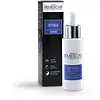What's inside
What's inside
 Key Ingredients
Key Ingredients

 Benefits
Benefits

 Concerns
Concerns

 Ingredients Side-by-side
Ingredients Side-by-side

Water
Skin ConditioningGlycerin
HumectantCaprylic/Capric Triglyceride
MaskingDimethicone
EmollientPropanediol
SolventGlyceryl Stearate Citrate
EmollientGossypium Herbaceum Seed Oil
Skin ConditioningLaminaria Digitata Extract
Skin ProtectingLinum Usitatissimum Seed Oil
PerfumingElaeis Guineensis Oil
EmollientBidens Pilosa Extract
HumectantChlorella Vulgaris Extract
Skin ConditioningRetinyl Palmitate
Skin ConditioningTocopherol
AntioxidantSaccharide Isomerate
HumectantPhosphatidylcholine
EmulsifyingCholesterol
EmollientMannitol
HumectantMaris Aqua
HumectantAcrylates/C10-30 Alkyl Acrylate Crosspolymer
Emulsion StabilisingXanthan Gum
EmulsifyingTetrasodium Glutamate Diacetate
Potassium Sorbate
PreservativeSodium Benzoate
MaskingEthylhexylglycerin
Skin ConditioningCitric Acid
BufferingPhenethyl Alcohol
MaskingSodium Chloride
MaskingSodium Hydroxide
BufferingPhenoxyethanol
PreservativeWater, Glycerin, Caprylic/Capric Triglyceride, Dimethicone, Propanediol, Glyceryl Stearate Citrate, Gossypium Herbaceum Seed Oil, Laminaria Digitata Extract, Linum Usitatissimum Seed Oil, Elaeis Guineensis Oil, Bidens Pilosa Extract, Chlorella Vulgaris Extract, Retinyl Palmitate, Tocopherol, Saccharide Isomerate, Phosphatidylcholine, Cholesterol, Mannitol, Maris Aqua, Acrylates/C10-30 Alkyl Acrylate Crosspolymer, Xanthan Gum, Tetrasodium Glutamate Diacetate, Potassium Sorbate, Sodium Benzoate, Ethylhexylglycerin, Citric Acid, Phenethyl Alcohol, Sodium Chloride, Sodium Hydroxide, Phenoxyethanol
Cyclopentasiloxane
EmollientCaprylyl Methicone
Skin ConditioningC12-15 Alkyl Benzoate
AntimicrobialUndecane
EmollientDimethicone/Vinyl Dimethicone Crosspolymer
Skin ConditioningDimethyl Isosorbide
SolventPentylene Glycol
Skin ConditioningTrisiloxane
Skin ConditioningPEG-7 Glyceryl Cocoate
EmulsifyingNiacinamide
SmoothingTridecane
PerfumingSodium Hyaluronate Crosspolymer
HumectantPEG-12 Dimethicone/PPG-20 Crosspolymer
Bisabolol
MaskingRetinol
Skin ConditioningHydroxypinacolone Retinoate
Skin ConditioningAscorbic Acid
AntioxidantTocopheryl Acetate
AntioxidantSilica Silylate
EmollientZea Mays Starch
AbsorbentTetrahexyldecyl Ascorbate
AntioxidantMethyl Methacrylate/Glycol Dimethacrylate Crosspolymer
Phenylpropanol
MaskingPolysorbate 20
EmulsifyingCaprylyl Glycol
EmollientPropanediol
SolventSilica
AbrasiveDimethicone
EmollientPropyl Gallate
AntioxidantDisodium EDTA
BHT
AntioxidantTocopherol
AntioxidantCyclopentasiloxane, Caprylyl Methicone, C12-15 Alkyl Benzoate, Undecane, Dimethicone/Vinyl Dimethicone Crosspolymer, Dimethyl Isosorbide, Pentylene Glycol, Trisiloxane, PEG-7 Glyceryl Cocoate, Niacinamide, Tridecane, Sodium Hyaluronate Crosspolymer, PEG-12 Dimethicone/PPG-20 Crosspolymer, Bisabolol, Retinol, Hydroxypinacolone Retinoate, Ascorbic Acid, Tocopheryl Acetate, Silica Silylate, Zea Mays Starch, Tetrahexyldecyl Ascorbate, Methyl Methacrylate/Glycol Dimethacrylate Crosspolymer, Phenylpropanol, Polysorbate 20, Caprylyl Glycol, Propanediol, Silica, Dimethicone, Propyl Gallate, Disodium EDTA, BHT, Tocopherol
Ingredients Explained
These ingredients are found in both products.
Ingredients higher up in an ingredient list are typically present in a larger amount.
Dimethicone is a type of synthetic silicone created from natural materials such as quartz.
What it does:
Dimethicone comes in different viscosities:
Depending on the viscosity, dimethicone has different properties.
Ingredients lists don't always show which type is used, so we recommend reaching out to the brand if you have questions about the viscosity.
This ingredient is unlikely to cause irritation because it does not get absorbed into skin. However, people with silicone allergies should be careful about using this ingredient.
Note: Dimethicone may contribute to pilling. This is because it is not oil or water soluble, so pilling may occur when layered with products. When mixed with heavy oils in a formula, the outcome is also quite greasy.
Learn more about DimethiconePropanediol is an all-star ingredient. It softens, hydrates, and smooths the skin.
It’s often used to:
Propanediol is not likely to cause sensitivity and considered safe to use. It is derived from corn or petroleum with a clear color and no scent.
Learn more about PropanediolTocopherol (also known as Vitamin E) is a common antioxidant used to help protect the skin from free-radicals and strengthen the skin barrier. It's also fat soluble - this means our skin is great at absorbing it.
Vitamin E also helps keep your natural skin lipids healthy. Your lipid skin barrier naturally consists of lipids, ceramides, and fatty acids. Vitamin E offers extra protection for your skin’s lipid barrier, keeping your skin healthy and nourished.
Another benefit is a bit of UV protection. Vitamin E helps reduce the damage caused by UVB rays. (It should not replace your sunscreen). Combining it with Vitamin C can decrease sunburned cells and hyperpigmentation after UV exposure.
You might have noticed Vitamin E + C often paired together. This is because it is great at stabilizing Vitamin C. Using the two together helps increase the effectiveness of both ingredients.
There are often claims that Vitamin E can reduce/prevent scarring, but these claims haven't been confirmed by scientific research.
Learn more about Tocopherol